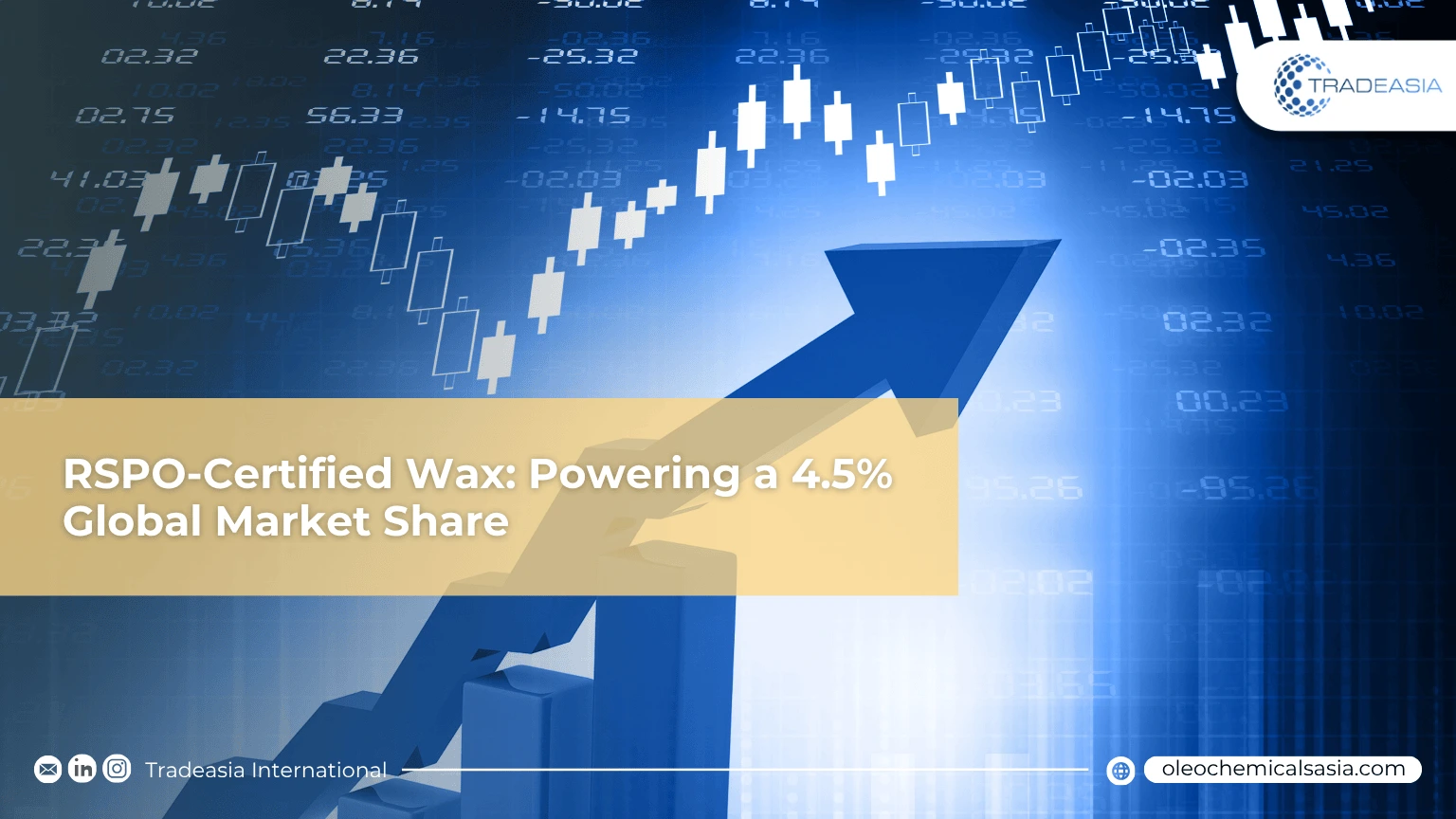Beyond Compliance: Why RSPO Certification Drives the Palm Wax Market to a 4.5% Global Share

Table of Content
- The Power of Certified Sustainable Stearin in Market Growth
- The Economic Imperative for Sustainability Investment
The Power of Certified Sustainable Stearin in Market Growth
The narrative surrounding the global wax market is decisively shifting, with certified sustainable Palm Wax emerging as a non-negotiable factor for growth. In October 2025, the share captured by palm wax has reached a critical estimated threshold of 4.5% of the total industrial wax market. This represents a significant year-on-year expansion of 18.4% from the 3.8% share observed in the previous year, demonstrating the speed at which sustainability credentials are reshaping industry competitiveness. Behind this rapid growth is the reliable access to certified raw materials. Successful trading in the highly specified palm derivatives sector requires deep logistical expertise and an unwavering focus on compliance. Tradeasia International is at the forefront, expertly navigating the complex requirements of sustainable oleochemicals, ensuring manufacturers can access certified supply chains that meet the strictest international standards.
This specialized service in high-quality sourcing is critical because the volume of Certified Sustainable Hydrogenated Palm Stearin (HPS) traded is directly translating into market dominance. Volume data from the Roundtable on Sustainable Palm Oil (RSPO) indicates that the volume of certified HPS traded for the year is projected to hit 8.88 Million MT—an 18.4% rise in certified product volume over the past year. This certified flow fuels high-value sectors, particularly the European and North American markets, where the RSPO uptake rate by Consumer Goods Manufacturers (CGMs) is soaring, moving past 90% and now estimated at 92.5% of all physical palm-based derivative purchases. As a market insight from the sector highlights, "The true value of palm derivatives is found in their sustainable provenance, providing both reliability and a competitive edge in mature markets."
The Economic Imperative for Sustainability Investment
The commitment to certified materials has moved far beyond a mere ethical consideration; it is a clear economic imperative. The projected Compound Annual Growth Rate (CAGR) for the sustainable wax segment is now forecast at 6.8% (2025–2030), a rate that substantially outperforms the projected 3.2% CAGR for traditional, price-sensitive paraffin wax. This performance gap underscores that the investment in certified supply chains—beginning with RSPO Stearin—unlocks access to the most dynamic and profitable market niches. Manufacturers who have yet to secure a robust Chain of Custody (CoC) for their HPS feedstock are actively forfeiting a share of the fastest-growing segments. The October data emphatically confirms that in the palm wax sector, sustainability is the primary lever for high-margin, future-proof business expansion.
Sources:
-
Palm Kernel Oleochemicals Market in Asia-Pacific | Growth Outlook and Strategic Insights to 2040 - Oleochemicals Asia
-
ACOP 2024: RSPO Market Trends Resilient Despite Global Challenges - RSPO
-
Palm Oil Market Size, Share and Forecast, 2025-2032 - Coherent Market Insights

Leave a Comment